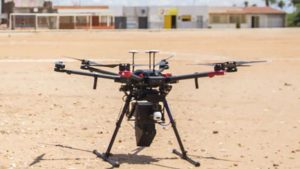What do drones, radiation and mosquitoes have in widespread? Two of this stuff can defeat the opposite.
The International Atomic Energy Agency (IAEA) introduced this week the profitable testing of a drone-based effort to sterilize mosquitoes in an effort to cease the unfold of the lethal Zika virus.
In cooperation with the United Nations’ Food and Agriculture Organization, the IAEA and Swiss-American non-profit WeRobotics developed a UAV answer to launch the airborne Sterile Insect Technique, a form of “insect birth control” that deploys radiation to sterilize male mosquitoes.
“The release mechanism for mosquitos has until now been a bottleneck in the application of SIT to control human diseases,” stated Jeremy Bouyer, medical entomologist on the Joint FAO/IAEA Division of Nuclear Techniques in Food and Agriculture. “The use of drones is a breakthrough, and paves the way for large-scale and cost-efficient releases, also over densely populated areas.”
WeRobotics is a “team of entrepreneurs, drone adventurers and humanitarians bringing robotics technology to communities for social good.”
“The biggest challenge in designing this mechanism was keeping the mosquitos healthy and competitive while transporting and releasing them at cool temperatures” stated Adam Klaptocz, co-founder of WeRobotics. “We’re pleased with initial tests that show less than 10 per cent mortality through the entire chilling, transport and aerial release process.”
Researchers will subsequent attempt to slim down the drone to extend carrying capability to 150,000 mosquitoes per flight.
“With the drone, we can treat 20 hectares in five minutes,” stated Bouyer. “Weighing less than 10 kilograms, the drone can carry 50,000 sterile mosquitos per flight. At 10,000 Euro per drone, its use also reduces the cost of releasing mosquitos by half.”
“We are hopeful in regards to the software of SIT for the management of Aedes aegypti in Brazil with the outcomes from the drone checks,” stated Jair Virginio, Director of Brazil-based Moscamed, a recently-designated IAEA Collaborating Centre.
WeRobotics deploys “Flying Labs” around the globe — collaborative establishments designed to share expertise that empowers humanitarian tasks in such locations as Peru the place drones ship medical provides to areas across the Amazon River.
 Unmanned Aerial Vehicle The latest drone news
Unmanned Aerial Vehicle The latest drone news




